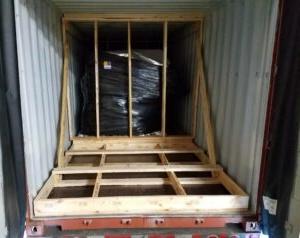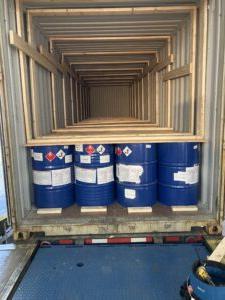The ocean shipping industry is complex, with numerous logistical pieces to carry out for a safe, reliable, and timely delivery. One of the most important steps to ensure a successful outcome is how the cargo on a sea container is loaded and secured.
In this post, we’re telling you all about it, so you have a deeper understanding and peace of mind while your valuables are shipped overseas.
Examination of the Container
When in charge of international ocean shipments, the inspection of a container prior to packing it is just as crucial as how you load and secure the items that go inside. If the container is damaged, it can cause significant property loss, delays, and financial burdens.
The container owner is typically responsible for ensuring the safety of the container, but the shipper needs to be vigilant as well. This ensures that no important details are overlooked and that the container is seaworthy enough to protect the goods contained inside.
The container’s integrity must be inspected and approved, from leaks to defects in design to holes.
Pro tips for the outside of the container inspection:
- Take photos of the outside of the container before loading
- Check the outside of the container for dents, bulges, holes, and cracks in the walls and roof
- Check the door security, ensuring they’re watertight
- Ensure lock rods close and lock correctly
Pro tips for the inside of the container inspection:
- Take photos of the inside of the container before loading
- Ensure the container is clean and dry prior to loading
- Ensure the floorboard is free of cracks and nails or other sharp objects that could harm the inventory
- Shut the doors while inside to ensure no light comes through anywhere
- Use cargo restraining devices that are good quality and in good condition
If you find that the container has any issues, damages, or other dysfunctions after your inspection, do not use it. Let the container owner know and ask for a new one.
How Cargo is Secured While in Transit

Properly securing your goods inside the container while it is a sea, is essential to a responsible shipping process.
Standard securing methods include:
- Shoring- using bars, struts, and spars in voids to keep cargo pressed against walls or other secured items
- Lashing- using ropes, chains, straps, wires, or nets secured to anchoring points that provide tension against the cargo
Both methods are intended to keep cargo in place throughout transit.
Proper Packing and Loading Practices
The shipper is responsible for packing and loading (also called stowing and stuffing) the container. Because of the unpredictability of ocean and weather behavior, packing and loading must be done proactively, with thoughtful intention.
Pro tips for packing and loading a sea container:
- When possible, pack the container to capacity
- If not possible to pack to capacity, use padding or filler to stuff between items
- When determining how many pieces the container will hold, each item must already be wrapped and packaged in the manner they’ll be shipped for correct weight and volume measurements
- Every minute counts when loading the container to ensure a timely process, so be ready to go when the container arrives
- Consider unloading as you load; the items to take off first should be loaded in last
- Keep items for different customers separated
- When necessary, leave room for forklift use at the top
- Use a barrier to keep cargo away from the doors
- Ensure weight is distributed evenly
- Keep created tiers level and use uniform sizes when stacking items
- Crate, box, pad, or skid oversized, heavy, sharp, and awkward items
- Use the floor space entirely when possible
- Fill empty spaces with fillers or padding
- Cover cargo close to the doors with a waterproof material in case leaking occurs
- Block, brace, or tie down cargo to prohibit movement
- Keep liquid cargo at the bottom and away from the solid cargo or shielded for protection
- Store the heaviest items on the bottom
- Ensure all doors and locks are properly sealed when loading is complete
Note that there are several laws and regulations regarding the shipment of hazardous cargo; speak to your shipper to find out what those are and how to ship these materials safely and legally.
Ocean Cargo Crating & Shipping Experts in Nashville
Whether you’re shipping industrial equipment, fine art, or anything in between, our ocean freight shipping team has the services you’re looking for, including:
- Door-to-port
- Port-to-port
- Two-day shipping
- Shipping insurance coverage
- ISPM 15 certified wood crates
- Moisture-prevention bagging or vapor barrier bagging
- Less than container load, for smaller exports
- Full container load, for larger exports
- Complete documentation and custom forms completion
Questions? Contact our team today to learn more about international sea shipping. We’re here to help your international cargo arrive safely, within budget, and on time.


